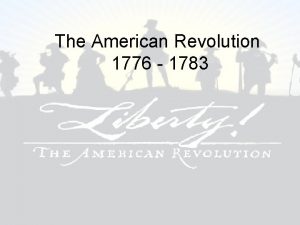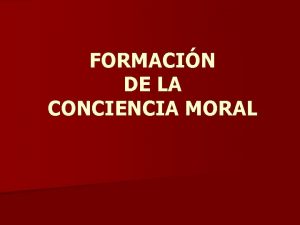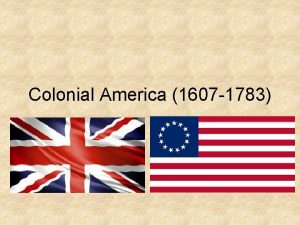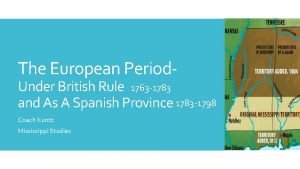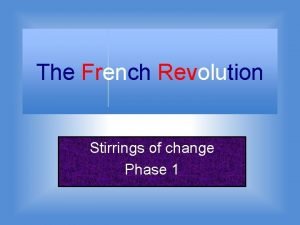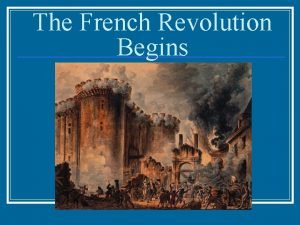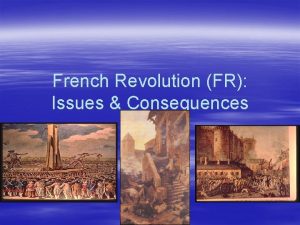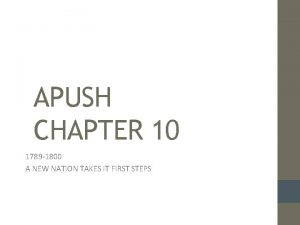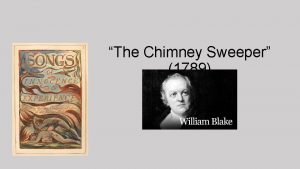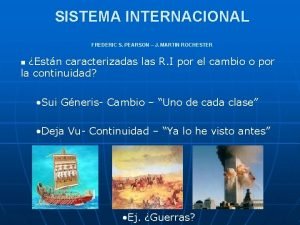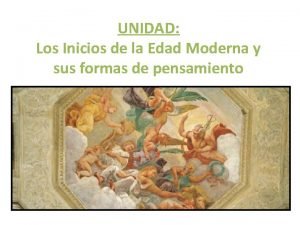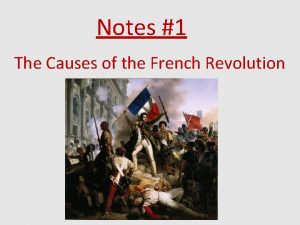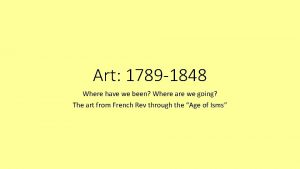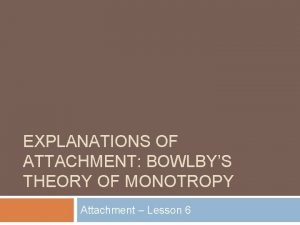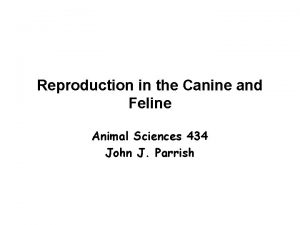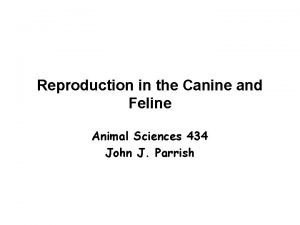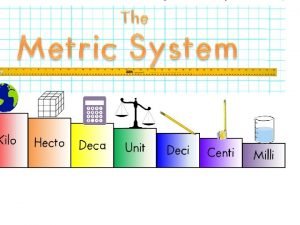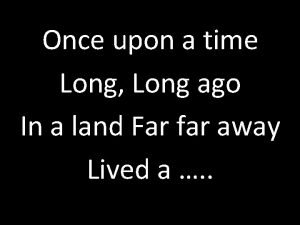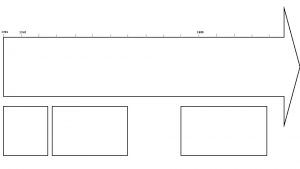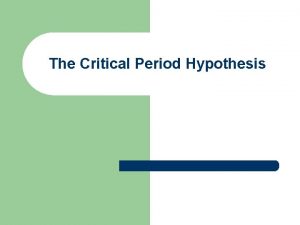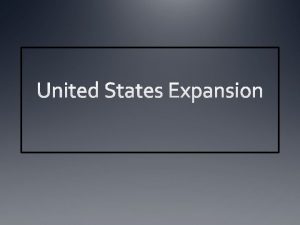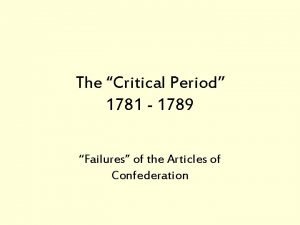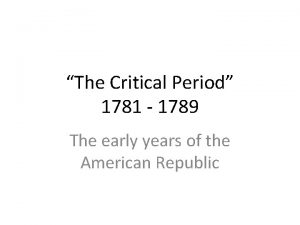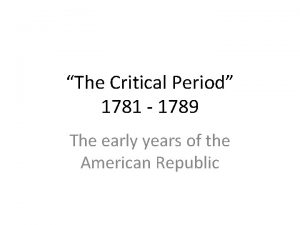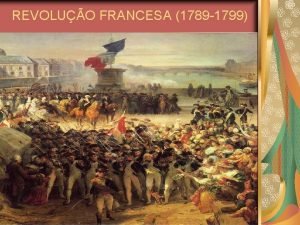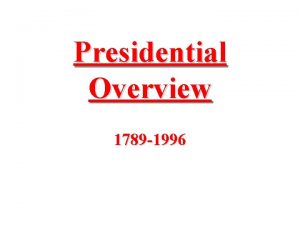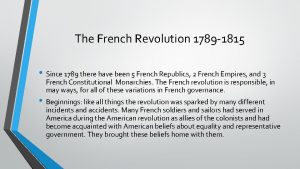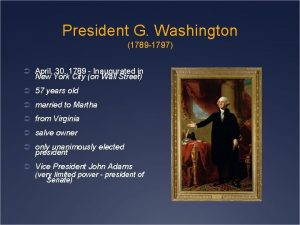THE CRITICAL PERIOD 1783 1789 It has long

























































- Slides: 57

THE CRITICAL PERIOD (1783– 1789)

It has long been a grave question whether any government, not too strong for the liberties of its people, can be strong enough to maintain its existence in great emergencies. ~ Abraham Lincoln, November 10, 1864

First Government of the United States of America THE ARTICLES OF CONFEDERATION (1781 – 1789) • During the years immediately following the Revolutionary War, the colonies organized themselves into a new American government. • The Articles of Confederation served as the foundation for this first attempt at a national government and while a failure, it was the lessons learned under the articles that helped strengthen the government formed by the Constitution.



Problem #1: Soldiers In A Time Of Peace 1) Concern over a standing army • Fear of army being used for imposing a tyrannical government 2) Inability to raise funds to support an army • Congress could not raise enough revenue • Some states withheld money they promised Congress 3) Effectiveness • Not effective • Potential mutiny for unpaid veterans • Inability to provide for the common defense of the nation

Problem #2: Settling the National Debt 1) Revolutionary War – Gov’t owed France > 10 million dollars – Gov’t owed U. S. citizens > 34 million dollars – Struggled to raise revenue 2) Congress could not tax (states had that power) – Congress had to rely on borrowing – Could not pass amendment to change the law because they needed 13 out of 13 vote to amend laws – not every state voted yes 3) Not successful – Failed to develop a workable plan – Bad credit rating

Problem #2: Settling the National Debt http: //www. usdebtclock. org/

Problem #3: Debtors, Creditors, & Paper Money 1) Money supply dried up • Huge war debt for the states • States raised taxes • Falling prices for crops hurt farmers > creditors seized farms • Farmers reacted with violence 2) Congress could not control the paper money supply • States printed their own money • Inflation led to paper money being nearly worthless 3) Effectiveness • Not effective • Unstable currency and therefore a weak economy • Conflict and violence between creditors and debtors Daniel Shays

Problem #4: The Pirates of North Africa 1) Pirates harassing U. S. merchants • U. S. no longer had the protection of the British navy 2) No mechanism to fight the pirates • British cut the yearly 4 million in trade • U. S. forced to pay tribute/bribe • U. S. did not have the power to fight the pirates (strong navy), nor the money to continue to pay them off 3) Effectiveness – Not effective – Just caused more economic problems – Tribute of 1 million dollars to let the captured Americans go

Problem #5: The Treaty of Paris 1) Enforcement of treaty provisions • Some states opposed the treaty • Conflict over treatment of loyalists (get their land back? ) • Colonial debt to British merchants (paper money O. K. ? ) • British presence in the Northwest (Ohio region) 2) Weak Congress • Could not force states to obey the treaty • Could not force the British out of the Northwest (Ohio region) 3) Effectiveness • Not effective • More credit issues • Inability to provide for the common defense of the nation

10 Days That Unexpectedly Changed America: Shays’ Rebellion • Chapter 2 – “Seeds of Rebellion” – (12: 30 – 18: 30) • Chapter 3 – “Taking Up Arms” – (18: 30 – 30: 20) Play until end of segment or stop at George Washington (“A General’s Response” 23: 17) • Skip to Chapter 4 – “A Civil War Looms”– (30: 20 – 37: 10) • Constitutional Convention: Show “Shays’ Legacy” (to set up Convention) (37: 10 – 43: 30) Total Time: 24 minutes

Shays Rebellion (1787) Shays Rebellion. JE: 2 A-1 n Case Video Study: Shays’ Rebellion n What occurred? n Why? n How is this incident related to one of the weaknesses of the Articles? n Why were the American elite “horrified? ”

Shays’ Rebellion (1787) • Daniel Shays, 39 year old Revolutionary War veteran- fought at Bunker Hill and Saratoga. • Resigns from the army in 1780 because he was not being paid. • Returns home and finds himself in court for nonpayment of debts.

Shays’ Rebellion: 10 Causes Long – Term Causes (1783 – 1786) 1) Taxation 2) Debt Short – Term Causes (1786 – 1787) 7) Militia Act (members of the militia accused of treason: face arrest, seizure of property, and/or execution) 8) Suspension of Habeas Corpus 3) Voting Restrictions (definition: no person should be held in custody unless charged 4) Class Warfare (rich vs. poor) with a crime) 5) Courts favor wealthy 6) Powerless Federal Government 9) Riot Act (more than 12 meeting: face arrest and/or execution) 10) Elite Hire Mercenaries

Shays’ Rebellion: 10 Causes Long – Term Causes (1783 – 1786) 1) Taxation 2) Debt Short – Term Causes (1786 – 1787) 7) Militia Act (members of the militia accused of treason: face arrest, seizure of property, and/or execution) 8) Suspension of Habeas Corpus 3) Voting Restrictions (definition: no person should be held in custody unless charged 4) Class Warfare (rich vs. poor) with a crime) 5) Courts favor wealthy 6) Powerless Federal Government 9) Riot Act (more than 12 meeting: face arrest and/or execution) 10) Elite Hire Mercenaries

WHAT’S THE PROBLEM? • Excessive property taxes (state taxes) • No pay for rev. war vets ( no power to tax) • Lack of stable currency • Lack of uniform currency • Foreclosures

• Leads about 700 rebels to Springfield, Mass. to storm the arsenal • Rebellion is put down by state militia • Shay retreats to Vermont after being sentenced to death for treason

Shays’ Rebellion: # Effects Short – Term Effects (1787 – 1788) 1) Fear by the minority, upper class that the majority lower class would threaten their status & property. Long – Term Effects (1789 – Present) 5) Federal government is given the power to raise & maintain an army in the U. S. Constitution. 6) X 2) Realized the federal government under the Articles of Confederation could not deal with insurrection. 3) Call for a convention to revise the Articles of Confederation. 4) Nationalists called for a strong central government.

Land Claims of the States After The Treaty of Paris 1783

Solution #1 – Western Lands • Western Lands – The greatest accomplishment of the Articles – Established a policy for settlement & creating a government in new lands – Cessation of Western Land Claims • All states gave up their claims to territories gained by the U. S. in the Treaty of Paris (1783)

WESTERN LAND CLAIMS & THE ORDINANCES OF 1785 & 1787

Land Ordinance of 1785 • Established a policy for division & settlement of land north of the Ohio River • Townships of 6 miles square divided into 36 subdivisions of 640 acres each • Sale of sections used to pay off national debt (at least $1 an acre) • Sale of 1 section used to support public education • Native Americans were totally disregarded until the Treaty of Greenville (1795) –Some negotiating with Indians over land

Land Ordinance of 1785

Northwest Ordinance of 1787 • 2 -Stage plan for territories becoming states: – When an area had a population of more than 5, 000 adult males > it could establish a government [governor, legislature, judges] – At 60, 000 people > write a constitution & apply for statehood • Statehood – When Congress approved their constitution • Northwest Territory became Ohio, Indiana, Illinois, Michigan, & Wisconsin

Back to the drawing board…… let’s meet in Philly

CALL FOR A CONVENTION

The Constitutional Convention (1787)

THE CONSTITUTIONAL CONVENTION: Historical Context–The Annapolis Convention (1786) • James Madison recommended all the states to send delegates to Annapolis, Maryland to discuss ways to reduce interstate conflicts. • At what came to be known as the Annapolis Convention, the few state delegates in attendance endorsed a motion that called for all states to meet in Philadelphia in May, 1787 to discuss ways to improve the Articles of Confederation in a "Grand Convention. " • Rhode Island, fearing that the Convention would work to its disadvantage, boycotted the Convention entirely in hopes of preventing any change to the Articles, and when the Constitution was presented to the states, refused to ratify it.

THE CONSTITUTIONAL CONVENTION: The Goal: • Originally intended only to revise the Articles of Confederation, the intention of many of its proponents, chief among them James Madison and Alexander Hamilton, was from the outset to create a new government rather than "fix" the existing one. • The delegates elected George Washington to preside over the convention. The result of the Convention was the United States Constitution.

The Constitutional Convention (1787) • 55 delegates who drafted the Constitution, included most of the outstanding leaders, or Founding Fathers, of the new nation. • The convention convened in the Pennsylvania State House, and George Washington was unanimously elected as president of the convention. • James Madison's Notes of Debates in the Federal Convention of 1787 remain the most complete record of the convention.

The Constitutional Convention (1787) • Absent: • Patrick Henry: refused to go because he "smelt a rat in Philadelphia, tending toward the monarchy. " • Thomas Jefferson, who was Minister to France during the convention, characterized the delegates as an assembly of "demi-gods. “ • John Adams: was in Europe as Minister to Great Britain, but he wrote home to encourage the delegates. • Rhode Island: refused to send delegates to the convention.

THE GREAT COMPROMISE: One of the first issues to be resolved was representation to the new government. The Articles of Confederation had allowed each state equal representation and equal say, despite size or population and this did not sit well with the largest states (Virginia, New York, Pennsylvania). The smaller states feared losing say in the federal government and so continued to support equality in representation. William Paterson James Madison The Great Compromise (2: 03) #16 Roger Sherman

THE 3/5 ths COMPROMISE: A fundamental economic and social division began to erupt over the issue of slavery. The southern, agriculturally based states relied heavily on slavery and slaves constituted a significant portion of their populations. The northern states opposed counting slaves for representation in government because they were not citizens and their population could easily be increased, tipping control of the federal legislature to the southern states. Debating Proportional Representation (3: 25) #17

THE TRADE (COMMERCE) COMPROMISE: Again a regional disagreement arose, in this case over the issue of trade and its regulation. The northern, more industrial states saw the regulation of trade by the federal government as essential to the smooth working of a national economy. The southern states feared regulation of trade would not only threaten the sale of slaves, but also the essential export of their agricultural products (chiefly cotton and tobacco). #18

THE PRESIDENCY COMPROMISE: Nearly all of the delegates could agree on the need for a president, to serve as a central figure and executive of the new nation. The disagreement arose over the power and service of such an office. Some delegates, fearing the rise of king-like president advocated for a weak official, who would be limited to a single one-year term. Others argued the need for a powerful figure who would be elected, but serve for life. Debates also raged about how best to elect the president and what role the people of the nation should serve in his selection. Liberty 8 – Not Another Monarchy (2: 22) #19

Federalism in Action

Delegated Powers Federal Powers Make treaties Immigration & Naturalization Shared Powers (17: 10) Reserved Powers Marriage & Divorce Laws

Separation of Powers


Congressional Requirements (2: 31) Powers of the Legislative Branch (3: 23) Checks & Balances (1: 30) House of Representatives (1: 41) Senate (1: 06) Powers of the Supreme Court (2: 23) Painless Judicial Branch (19: 01)

RATIFICATION DEBATES: Immediately following the Constitutional Convention the delegates to Philadelphia brought the newly crafted Constitution to their home states for ratification (or approval). Most states held special ratification conventions, with elected officials representing counties or regions throughout the state. The New York ratifying convention was held in the city of Poughkeepsie. While many of the smaller states quickly ratified the new Constitution, the debate in the two largest and most important states, New York and Virginia, raged on for months. The debate in New York was particularly divisive. The Constitutional supporters, the Federalists, took the debate into the public forum of the press, publishing a series of pro-ratification essays collectively known as the Federalist Papers. While the Federalist Papers were simply signed "Publius" they were the work of Alexander Hamilton, James Madison and John Jay and they still stand today as some of the greatest commentary on the meaning and intent of the Constitution's chief authors. The Anti-Federalist opposition to ratification was strong and while all of the states eventually accepted the new government, states such as Virginia and Massachusetts did so only after attaching recommendations concerning the addition of a Bill of Rights. The first 10 amendments to the Constitution were added soon after ratification and became the U. S. Bill of Rights and stand as the Anti. Federalists greatest contribution to the Constitution they so opposed. James Madison Patrick Henry Alexander Hamilton John Jay #20 Liberty 9 – How Do We Protect Our New Liberty (4: 15) Liberty 10 – Compromise & Approval (5: 05)

“ I like much the general idea of framing a government, which should go on of itself, peaceably, without needing continual recurrence to the State legislatures. . I will now tell you what I do not like. First, the omission of a bill of rights. . Let me add, that a bill of rights is what the people are entitled to against every government on earth, general or particular; and what no just government should refuse. . ” —Thomas Jefferson’s letter to James Madison from Paris, December 20, 1787 #21

Delaware Becomes The First State - State Ratification Convention at Battell's Tavern December, 1787 #22

#23

Ratification Celebration in New York. A parade was held in New York City in July 1788 to celebrate the state's ratification of the Constitution. The floats included the federal ship Hamilton, which was drawn on a flatbed cart. #24 ©BETTMANN/CORBIS.

Liberty 11 – Bill of Rights (1: 19) #25

A painting for the 200 th anniversary of the U. S. Constitution. The artist saw George Washington in a dream signing the Constitution. He being President of the Constitutional Convention was the first to sign. Madison and Hamilton authors of the Federalist Papers flank him. The images behind them represent the people of all nationalities yet to come seeking the opportunity that freedom will afford them thru the Constitution. #26 Liberty 12 – The Question of Slavery (2: 17)

#27 George Washington's inauguration as the first president of the United States took place on April 30, 1789. The inauguration, held at Federal Hall in New York City Liberty 13 – A New Kind of Power (4: 06)

The Articles of Confederation Fail During the years immediately following the Revolutionary War, the colonies organized themselves into a new American government. The Articles of Confederation (1781 -1789) served as the foundation for this first attempt at a national government and while a failure, it was the lessons learned under the articles that helped strengthen the government formed by the Constitution.

The Articles of Confederation Fail During the years immediately following the Revolutionary War, the colonies organized themselves into a new American government. The Articles of Confederation (1781 -1789) served as the foundation for this first attempt at a national government and while a failure, it was the lessons learned under the articles that helped strengthen the government formed by the Constitution.

The Articles of Confederation Fail During the years immediately following the Revolutionary War, the colonies organized themselves into a new American government. The Articles of Confederation (1781 -1789) served as the foundation for this first attempt at a national government and while a failure, it was the lessons learned under the articles that helped strengthen the government formed by the Constitution.

The Articles of Confederation Fail During the years immediately following the Revolutionary War, the colonies organized themselves into a new American government. The Articles of Confederation (1781 -1789) served as the foundation for this first attempt at a national government and while a failure, it was the lessons learned under the articles that helped strengthen the government formed by the Constitution.

The Articles of Confederation Fail During the years immediately following the Revolutionary War, the colonies organized themselves into a new American government. The Articles of Confederation (1781 -1789) served as the foundation for this first attempt at a national government and while a failure, it was the lessons learned under the articles that helped strengthen the government formed by the Constitution.

The Articles of Confederation Fail During the years immediately following the Revolutionary War, the colonies organized themselves into a new American government. The Articles of Confederation (1781 -1789) served as the foundation for this first attempt at a national government and while a failure, it was the lessons learned under the articles that helped strengthen the government formed by the Constitution.

The Articles of Confederation Fail During the years immediately following the Revolutionary War, the colonies organized themselves into a new American government. The Articles of Confederation (1781 -1789) served as the foundation for this first attempt at a national government and while a failure, it was the lessons learned under the articles that helped strengthen the government formed by the Constitution.

A New Nation • Ch. 1 – Introduction (0: 00 – 0: 40) • Ch. 2 – Birth Of A New Government (0: 40 – 2: 40) • Ch. 3 – To Be A Republican (2: 40 – 5: 35) • Ch. 4 – Shays’ Rebellion (5: 35 – 7: 40) • Ch. 5 – The Constitutional Convention (7: 40 – 11: 35) • Ch. 6 – “Am I Not A Man And A Brother? ” (11: 35 – 13: 20) • Ch. 7 – We The People (13: 20 – 15: 45) • Ch. 8 – The Promise Of Freedom (15: 45 – 17: 50)
 Critical semi critical and non critical instruments
Critical semi critical and non critical instruments Principle of sterilization
Principle of sterilization The development of children 7th edition
The development of children 7th edition Critical period vs sensitive period
Critical period vs sensitive period Critical period vs sensitive period
Critical period vs sensitive period Critical period vs sensitive period
Critical period vs sensitive period Mexican cession previous owner
Mexican cession previous owner Catecismo de la iglesia 1783
Catecismo de la iglesia 1783 Us in 1783
Us in 1783 Catecismo de la iglesia 1783
Catecismo de la iglesia 1783 Us in 1783
Us in 1783 1783-1607
1783-1607 Under british rule, 1763-1783
Under british rule, 1763-1783 Treaty of paris 1783 apush
Treaty of paris 1783 apush Long and short
Long and short Long long long ago there lived a little girl
Long long long ago there lived a little girl Từ ngữ thể hiện lòng nhân hậu
Từ ngữ thể hiện lòng nhân hậu Compare non-critical readers with critical readers.
Compare non-critical readers with critical readers. The tennis court oath
The tennis court oath French revolution political cartoons explained
French revolution political cartoons explained Europe in 1789
Europe in 1789 Convention of 1800 apush
Convention of 1800 apush 1789-1614
1789-1614 The chimney sweeper songs of experience
The chimney sweeper songs of experience Bolton romanticism amp; politics 1789 1832 download
Bolton romanticism amp; politics 1789 1832 download Frise chronologique 1789 à 1799
Frise chronologique 1789 à 1799 Napoleon 1789
Napoleon 1789 Martin rochester
Martin rochester Europa en 1789
Europa en 1789 What was an immediate cause of the 1789 french revolution
What was an immediate cause of the 1789 french revolution Linea del tiempo de la edad antigua
Linea del tiempo de la edad antigua 05.05.1789
05.05.1789 Discuss the causes of the french revolution of 1789
Discuss the causes of the french revolution of 1789 The divisions in spanish colonial society 1789
The divisions in spanish colonial society 1789 1797 - 1789
1797 - 1789 July 14 1789
July 14 1789 1789 france
1789 france Against the gods 1789
Against the gods 1789 Art 1789
Art 1789 1789
1789 What is the critical period hypothesis
What is the critical period hypothesis Monotropy
Monotropy What is the critical period hypothesis
What is the critical period hypothesis What is the critical period hypothesis
What is the critical period hypothesis Refractory period
Refractory period Absolute refractory period and relative refractory period
Absolute refractory period and relative refractory period What period lasted from 1750-1825?
What period lasted from 1750-1825? What element is nonmetallic period 3 atomic mass 32
What element is nonmetallic period 3 atomic mass 32 The period of activism
The period of activism Stability period vs measurement period
Stability period vs measurement period Trustee period and royal period
Trustee period and royal period Ce vs ad
Ce vs ad How long is a dog in heat
How long is a dog in heat How long is a female dog in heat
How long is a female dog in heat Not so long ago, people
Not so long ago, people Once upon a time there was a king short story
Once upon a time there was a king short story What type of bird does the tinikling dance imitates?
What type of bird does the tinikling dance imitates? Once upon a time long long ago
Once upon a time long long ago








